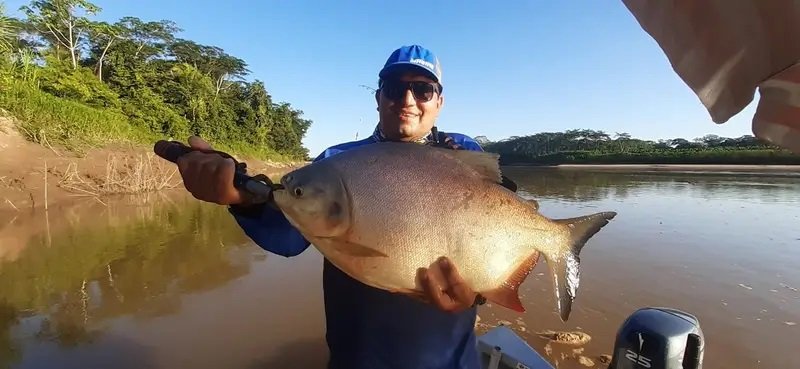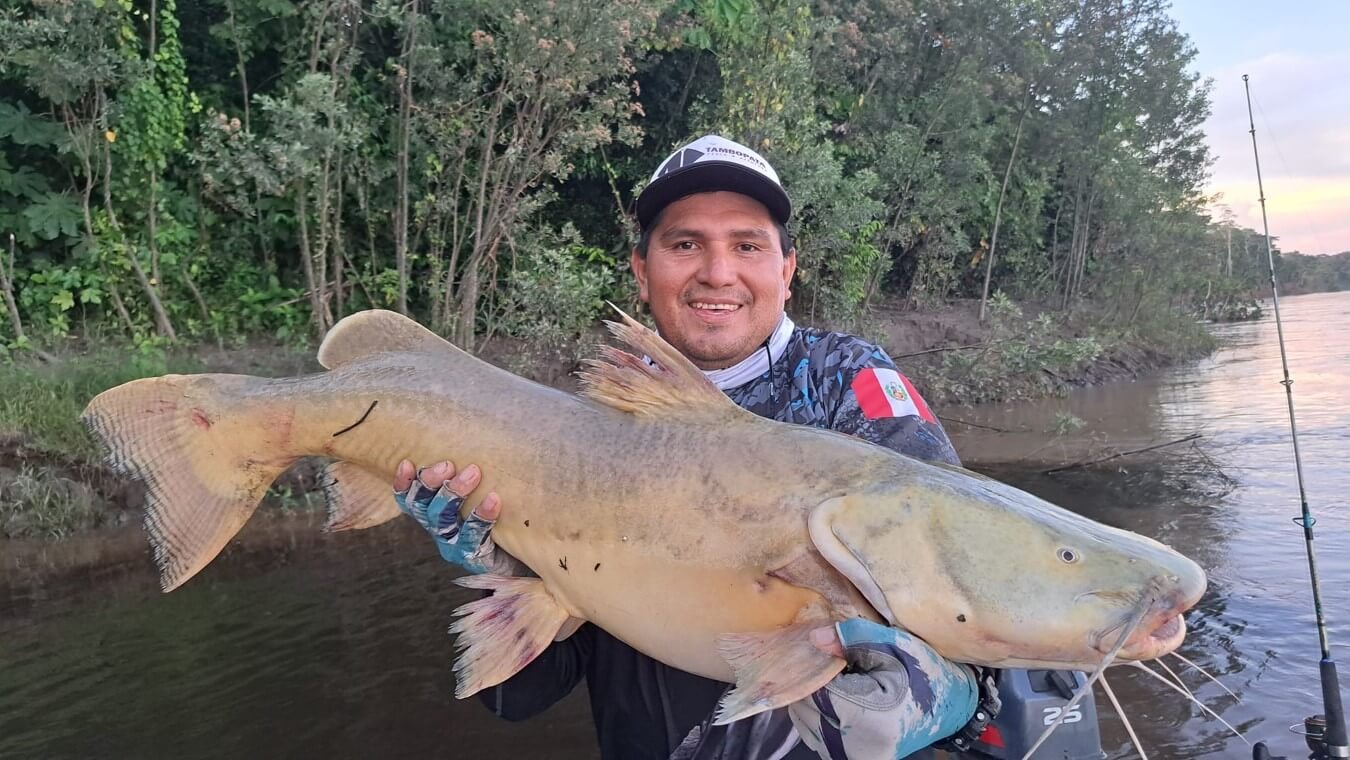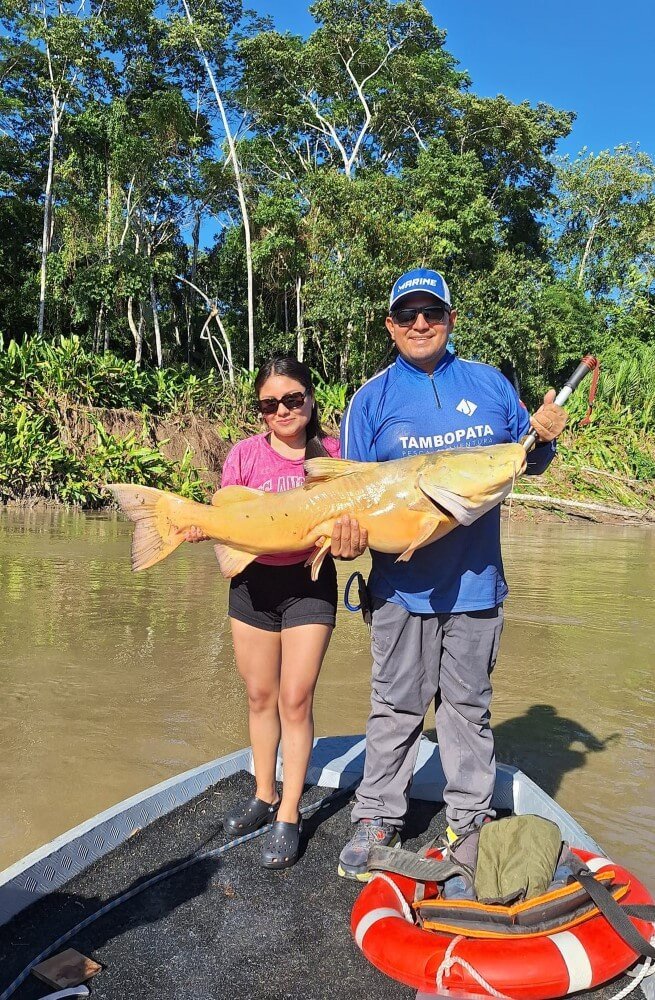The peacock bass is one of the most sought-after fish in sport fishing, and within its species, there are several subspecies with unique characteristics. We will delve into advanced peacock bass fishing techniques, exploring the differences between the blue peacock bass (Cichla piquiti) and the yellow peacock bass (Cichla kelberi). Although they share some similarities, there are significant differences in morphology, behavior, and habitat. Knowing these differences is key to improving your fishing strategy.

Morphological Differences: Blue Peacock Bass vs. Yellow Peacock Bass
At first glance, the blue and yellow peacock bass may appear similar, but they present some clear differences in their coloration and size:
Blue Peacock Bass (Cichla piquiti):
- Predominantly dark blue coloration with black spots on the sides.
- Typically larger, reaching lengths of up to 1 meter and weighing more than 10 kg.
- Three distinctive vertical bars on its sides.
Yellow Peacock Bass (Cichla kelberi):
- Bright yellow coloration on its body with more dispersed and less defined spots.
- Smaller species compared to the blue peacock bass, with an average weight of 3 to 5 kg.
- Does not always have the three distinctive bars, making it easily distinguishable from the blue one.
Behavioral Differences

The behavior of the peacock bass varies depending on the subspecies and the environment they inhabit:
Blue Peacock Bass:
- More aggressive and territorial, making it an exciting challenge for anglers.
- Prefers open waters in large rivers with moderate currents, where it ambushes its prey.
- Its activity is more intense during the dry season when water levels drop, concentrating them in smaller areas.
Yellow Peacock Bass:
- Less aggressive but equally challenging to catch.
- Typically inhabits calmer waters, such as lakes, lagoons, and densely vegetated areas.
- Feeds mainly on small fish and shrimp, and its activity may increase in calmer waters.
Where to Find Blue and Yellow Peacock Bass?

Both subspecies are native to South America, but their specific habitats vary. Here’s where you can find them:
Blue Peacock Bass:
- Araguaia River (Brazil): A great destination for blue peacock bass fishing, where you can find large specimens.
- Tocantins River (Brazil): This river is known for its population of blue peacock bass, especially in areas with moderate currents.
- Amazon Reserves: These fish can be found in open waters here, where they actively hunt.
Yellow Peacock Bass:
- Laguna de Moxos (Bolivia): Calm water zone perfect for yellow peacock bass, known for its warmer waters and vegetation.
- Ucayali River (Peru): Although less common than the blue, it is possible to find specimens in densely vegetated areas.
- Pantanal (Brazil): This vast wetland area hosts many yellow peacock bass, an ideal destination for sport fishing in calmer waters.
Fishing Techniques for Blue and Yellow Peacock Bass

Given the differences in behavior and habitat, fishing techniques vary between blue and yellow peacock bass:
For Blue Peacock Bass:
- Surface lures such as poppers are effective, as this predator reacts quickly to movement in open waters.
- Early morning fishing is ideal, as the blue peacock bass is more active during the first hours of the day.
- Use fast-action rods to better control the fish in areas with moderate currents.
For Yellow Peacock Bass:
- Mid-depth lures and crankbaits work best in calm waters and vegetated areas.
- Lures that imitate small fish and shrimp are particularly effective since they are the yellow peacock bass’s primary food source.
- Slow-speed fishing is ideal for attracting the attention of the yellow peacock bass, which is more cautious and less aggressive than its blue counterpart.
Conservation and Responsible Fishing
It’s important to remember that both subspecies are under fishing pressure in their natural habitats. Therefore, it’s crucial to practice responsible fishing:
- Catch and release: This practice ensures that peacock bass continue to thrive in their natural habitats.
- Use barbless hooks: These make it easier to release the fish without causing permanent damage.

The blue and yellow peacock bass are fascinating species with distinct behaviors and morphologies, offering unique challenges for sport fishermen. Understanding their differences and habitats is key to a successful fishing experience.
Additionally, if you want to explore the best fishing destinations for these species, Amazonas Fishing will take you to the most remote places and provide you with the perfect fishing experience.





